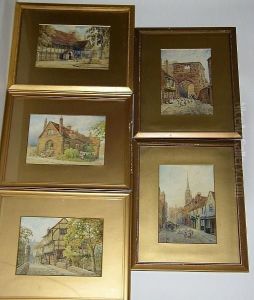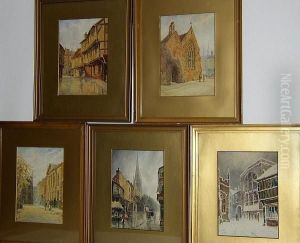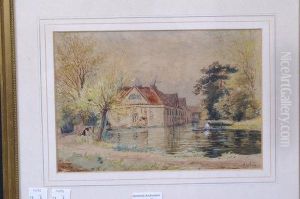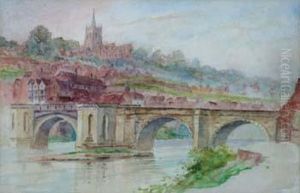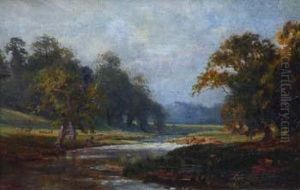Herbert Edward Cox Paintings
Herbert Edward Cox was a British artist known for his work in stained glass and his role in the Arts and Crafts movement. Born in 1870, Cox grew up during a period of significant change in the art world of Britain, which was characterized by a reaction against the industrial revolution and the mass production of decorative arts. The Arts and Crafts movement sought to revive traditional craftsmanship and restore the dignity and value of handmade objects.
Cox was educated at the Birmingham School of Art, where he was influenced by the teachings of Edward R. Taylor and the principles of the Arts and Crafts movement. He became an accomplished designer of stained glass, an art form that experienced a revival during this period. His work often featured rich colors and intricate patterns, and he was skilled at integrating his designs with the architectural spaces in which they were placed.
Throughout his career, Cox worked on a number of notable projects, creating stained glass windows for churches, public buildings, and private residences across the United Kingdom. His designs often incorporated themes from nature, as well as religious iconography, reflecting the movement's emphasis on the connection between the natural world and spiritual life.
Although Cox is not as widely known today as some of his contemporaries, his contributions to the field of stained glass and the Arts and Crafts movement were significant. He helped to elevate the status of stained glass as a fine art and was part of a broader effort to bring beauty and craftsmanship back into the everyday lives of people.
Herbert Edward Cox passed away in 1941, leaving behind a legacy of beautiful stained glass works that continue to be appreciated for their artistry and craftsmanship. His life's work stands as a testament to the enduring values of the Arts and Crafts movement and the impact that thoughtful and well-crafted design can have on the built environment.
